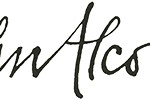The world in which Alcorn worked was that of mass communication, one dictated by the rhythms of commerce and its accompanying deadlines. Just as importantly, it was a world in which the artist drew inspiration from stimuli that were almost entirely externally generated. The nature and content of the assignment, over which the graphic artist had little control, provided the creative impetus. He came to rely on these external stimuli for inspiration; in fact, the vast majority of the art he made was conceived in direct response to an assignment. Time and production constraints (in those days, possibilities of full-color process reproduction remained few and far between) required him to be efficient and resourceful and think conceptually, all the while devising a stylistic shorthand that would be so seductive as to invite repeated viewings on the part of the public.
Looking at Alcorn’s production, particularly in the first years of his career, one can see how the environment that he created for his family found its way into his work. The most obvious and abundant of these references paid homage to his wife Phyllis, his muse. Permutations of the immediately identifiable, archetypal likeness he established for her early on in their marriage weave in and out of his work, becoming an integral part of it. Her presence in his oeuvre constitutes the most eloquent expression of the union of art and life he so steadfastly cultivated.

